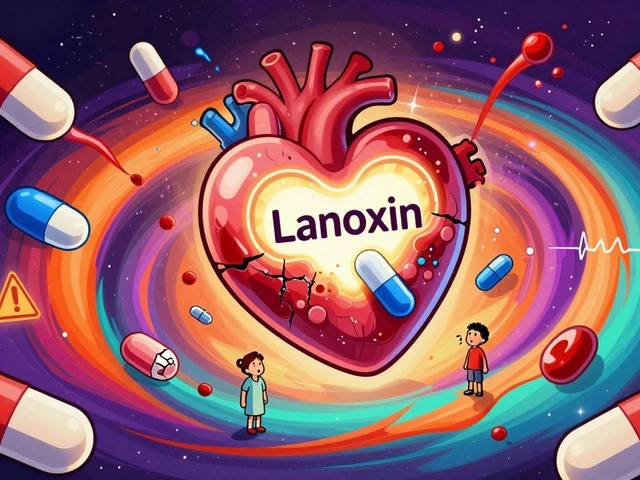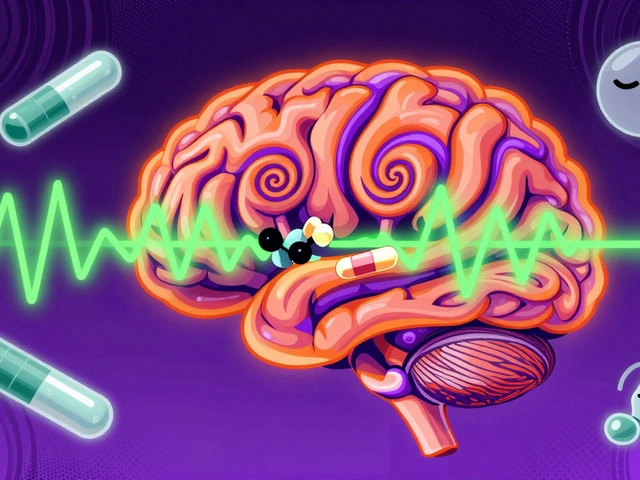baclofen – everything you need to know
When working with baclofen, a GABAB receptor agonist used as a muscle relaxant. Also known as Lioresal, it helps reduce spasticity, involuntary muscle stiffness often caused by nerve damage and painful muscle cramps. The drug works by binding to GABAB receptors, special proteins in the spinal cord that dampen nerve signals, which in turn lowers the excitability of motor neurons. Because of this mechanism, baclofen is a go‑to option for people dealing with conditions like multiple sclerosis, an autoimmune disease that frequently causes muscle spasticity. Understanding how these entities interact gives you a clearer picture of why baclofen shows up in so many treatment plans.
Key aspects to consider before starting baclofen
The first thing to check is whether you actually need a systemic muscle relaxant. Baclofen is most effective for chronic spasticity that doesn’t respond to physical therapy alone. If you have acute muscle cramps after exercise, over‑the‑counter options might be enough. When baclofen is appropriate, the typical starting dose is 5 mg three times daily, gradually increasing by 5 mg each week until the desired effect or the maximum recommended dose (usually 80 mg per day) is reached. This titration schedule helps you avoid common side effects like drowsiness, dizziness, or lowered blood pressure. Always discuss kidney function with your doctor, because impaired clearance can raise drug levels and increase the risk of toxicity.
Another crucial piece of the puzzle is monitoring for withdrawal symptoms. Baclofen has a short half‑life, so stopping it abruptly can lead to a rebound increase in spasticity, hallucinations, or even seizures. If you need to discontinue, a slow taper—cutting the dose by 10 % each day—is the safest route. Many patients also wonder about interactions with other CNS depressants such as benzodiazepines or alcohol. These can amplify sedative effects, so it’s wise to keep a medication list handy and alert your healthcare provider to any changes. Finally, keep an eye on long‑term safety: some studies suggest a small risk of hepatic strain, so periodic liver function tests may be recommended, especially for high‑dose users.
Beyond the basics, baclofen’s role expands into off‑label territories. Some clinicians use it to treat chronic hiccups, severe gastro‑esophageal reflux, or even certain types of neuropathic pain, leveraging its ability to dampen overactive nerve pathways. Intrathecal baclofen pumps—devices that deliver the drug directly into the spinal fluid—are an option for severe spasticity when oral dosing isn’t enough. These pumps reduce the total amount of drug needed, cutting down systemic side effects while delivering stronger local relief. Whether you’re exploring oral therapy, an intrathecal device, or an off‑label use, the core concept remains the same: baclofen modulates the GABAB system to calm hyper‑active muscles.
Below you’ll find a curated collection of articles that dive deeper into each of these points. From dosage tables and side‑effect management to real‑world patient stories and comparisons with other muscle relaxants, the posts are designed to give you practical guidance you can apply right away. Browse the list to see how baclofen fits into broader treatment strategies, discover tips for safe tapering, and learn what to expect if you’re considering an intrathecal pump. Armed with this overview, you’ll be better prepared to have an informed conversation with your provider and make the most of baclofen’s therapeutic potential.
Acamprosate vs Alternatives: Efficacy, Safety, and Choosing the Right Treatment
A detailed comparison of Acamprosate with naltrexone, disulfiram, baclofen and topiramate, covering efficacy, safety, dosing and how to pick the right AUD medication.





